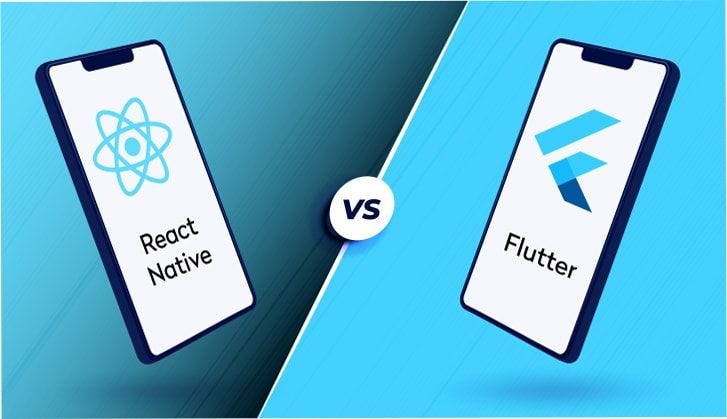Did you know that Dubai’s residential real estate market saw a 43.9% increase in 2023, with over 17,741 transactions in the first two months? The real estate sector is vital for diversifying the UAE’s economy, contributing about 5.5% to the country’s GDP as the UAE focuses on reducing its dependency on oil and gas revenues.
The rapid urbanization and population growth in the UAE have created a thriving real estate market, presenting significant opportunities for investment. The UAE’s investor-friendly environment, including favorable policies and tax incentives, further enhances its appeal for real estate ventures.
Property Finder, a leading real estate app in the UAE, receives over 16 million page views monthly, with about 89% of its traffic coming from within the UAE. The app commands a notable 65% market share in the region and earns approximately $50 million annually.
For those interested in developing a similar real estate app, a common question is the cost involved. This article explores the process, key factors influencing costs, and essential features of a successful real estate mobile app.
The cost to develop a real estate app in the UAE ranges from $40,000 to $300,000 (150k AED to 1100k AED). Various factors affect the overall development costs, including app complexity, features, and the location of the development firm.
Exploring the Business Model of Property Finder: Key Elements of Success
Property Finder is a prominent real estate app in the UAE, effectively leveraging the growing market. It provides users a reliable platform to search for properties across the region.
Key Success Factors of Property Finder Include:
Extensive Property Database
The app features an extensive and diverse range of property listings, covering various types of real estate, including residential, commercial, and luxury properties. Users can explore a broad spectrum of options, from apartments and villas to office spaces and retail units. Each listing is detailed with high-quality images, comprehensive descriptions, and essential information such as property size, layout, and pricing. This variety and depth of information help users find properties that meet their specific needs and preferences, significantly enhancing the app’s attractiveness and usability.
User-Centric Design
An intuitive and user-friendly design is central to the app’s success. The interface is crafted to be simple yet functional, allowing users to navigate effortlessly through property listings and search filters. The design focuses on delivering a seamless experience, with easy-to-access features and a visually appealing layout. This enhances user satisfaction and encourages repeat use, which is crucial for maintaining a high level of engagement and retention. Additionally, the design is responsive, ensuring a smooth experience across different devices and screen sizes.
Strategic Partnerships
Property Finder has established collaborations with various real estate agencies, developers, and property managers. These partnerships expand the app’s reach and inventory, providing users with access to a wide range of listings from reputable sources. By partnering with key players in the real estate market, the app ensures that its listings are current and relevant, offering users the latest opportunities in the market. These relationships also enhance the app’s credibility and reliability, making it a trusted platform for property seekers.
Localized Experience
The app caters to the diverse demographic of the UAE by incorporating localization features such as multilingual support and currency conversion. Users can interact with the app in their preferred language, making it more accessible and user-friendly. Additionally, the app provides local currency options, allowing users to view property prices in their currency, which simplifies the decision-making process. Location-based features, such as nearby amenities and transportation options, are also included to provide users with a comprehensive view of each property’s surroundings.
Essential Features for a Real Estate App: Enhancing User Experience
To create an engaging real estate app, consider incorporating the following features:
Comprehensive Listings
A robust property database is essential for attracting users. The app should include a wide range of property types, from residential units to commercial spaces. Users should be able to browse through listings with ease, using filters to narrow down their search based on criteria such as location, price range, property type, and more. Detailed listings with high-quality images, virtual tours, and thorough descriptions enable users to gain a complete understanding of each property without needing to visit in person initially.
Advanced Search Options
Implementing advanced search filters allows users to refine their property search based on specific preferences and requirements. Filters might include parameters such as location, price range, number of bedrooms, amenities, and property type. This functionality helps users quickly find properties that align with their needs, saving them time and improving their overall experience. The search results should update dynamically based on the selected filters, providing real-time feedback and options.
Detailed Property Information
Each property listing should provide comprehensive details, including floor plans, property dimensions, and a gallery of high-resolution photos. Descriptions should cover key features, such as the condition of the property, nearby facilities, and any special attributes. This information helps users make informed decisions by offering a clear picture of what to expect, thereby reducing uncertainties and enhancing the likelihood of successful transactions.
Interactive Maps and Area Insights
Interactive maps are a valuable feature for users to visualize property locations within their broader context. The app should include maps that display nearby amenities, such as schools, hospitals, shopping centers, and public transport options. Users can explore the neighborhood and assess factors like commute times and proximity to essential services. This feature provides additional context to property listings, helping users make more informed choices based on the surrounding area.
Saved Searches and Alerts
Allow users to save their search criteria and set up alerts for new properties that match their preferences. This feature ensures that users stay updated on the latest listings without having to repeatedly enter their search parameters. Notifications can be customized based on user preferences, such as new listings, price changes, or updates on saved properties. This functionality enhances user engagement by keeping them informed and encouraging frequent app usage.
Direct Communication with Sellers
Enable users to contact property owners or agents directly through the app. This feature facilitates quick communication for inquiries, viewings, and negotiations. Users should be able to send messages, request calls, or schedule appointments seamlessly within the app. Direct communication streamlines the process of obtaining additional information and arranging property visits, making it easier for users to take the next steps in their property search.
User Feedback and Ratings
Incorporate a system for users to leave reviews and ratings for properties and agents. This feature fosters transparency and helps other users make better-informed decisions. Reviews can cover various aspects, such as the accuracy of property listings, the responsiveness of agents, and the overall experience of dealing with the property. Ratings and feedback contribute to building trust within the app and provide valuable insights into the quality of listings and services.
Mortgage Calculator
Include a mortgage calculator tool that allows users to estimate their potential monthly payments based on property price, down payment, interest rate, and loan term. This feature helps users understand their financial obligations and budget accordingly. Providing an integrated mortgage calculator enhances the app’s utility by offering a practical tool that supports users in their property purchasing process.
Multi-Language and Currency Options
Support multiple languages and currencies to cater to a diverse user base. This feature allows users to interact with the app in their preferred language and view property prices in their local currency. It enhances the app’s accessibility and appeal to both local and international users, ensuring that the app meets the needs of a wide audience.
Estimating the Cost of Developing a Real Estate App
The cost of developing an app similar to Property Finder ranges from $40,000 to $300,000 (150k AED to 1100k AED). Here are the factors influencing the overall cost:
Design Complexity
The complexity of the app’s design significantly impacts development costs. A more sophisticated design, including custom graphics, animations, and interactive elements, requires additional time and resources. Investing in a high-quality design enhances the user experience but also increases the overall cost. A well-designed interface contributes to user satisfaction and can differentiate the app from competitors.
Platform Choice
The choice of development platform affects the cost. Developing for iOS, Android, or a cross-platform solution each comes with its own set of expenses. Starting with a single platform, such as iOS or Android, can help manage initial costs. Once the app gains traction, expanding to additional platforms can be considered. Each platform has its development requirements and associated costs.
Development Team Size
The size and composition of the development team influence the overall cost. Larger teams or those with specialized skills may have higher fees. Options include in-house development, outsourcing, or hiring freelancers. Each approach has its cost considerations, and choosing the right team can impact the budget. Outsourcing to a reputable development firm can provide access to experienced professionals while optimizing costs.
Geographic Location of the Development Firm
The location of the development firm affects the hourly rates for development services. Different regions have varying costs, impacting the overall development budget:
Hourly Rates of Development by Region
- UAE: $60 – $65
The United Arab Emirates offers competitive rates in the range of $60 to $65 per hour for development services. - US: $95 – $100
In the United States, development costs are among the highest, ranging from $95 to $100 per hour. - Western Europe: $80 – $90
Western Europe presents a mid-to-high range for development services, with rates between $80 and $90 per hour. - Australia: $70 – $90
In Australia, development hourly rates fall between $70 and $90, reflecting a broad spectrum of service costs. - Eastern Europe: $50 – $55
Eastern Europe offers the most cost-effective development rates, ranging from $50 to $55 per hour. - Asia: $25 – $40
Asia provides the most affordable development services, with hourly rates ranging from $25 to $40.
Data Integration
Integrating data from multiple sources, such as property databases and APIs, is a complex process. It involves ensuring the accuracy and timeliness of information, which requires significant development effort. The cost of integrating these data sources can vary depending on the complexity and volume of data. Reliable data integration is crucial for providing users with up-to-date and accurate property information.
Location-Based Features
Incorporating location-based features, such as geolocation and map integration, requires additional development work. These features enhance the app’s functionality by providing users with context about property locations and nearby amenities. The complexity of implementing these features can influence the overall cost. Geolocation services and map integration add value to the app by improving user experience and decision-making.
Security and Data Protection
Implementing robust security measures is essential for protecting user data and ensuring privacy. Developing secure authentication processes, data encryption, and compliance with regulations such as GDPR or CCPA involves additional costs. Investing in security is crucial for maintaining user trust and safeguarding sensitive information. Security measures contribute to the overall development cost but are essential for a secure and trustworthy app.
Virtual Reality Integration
Incorporating augmented reality (AR) or virtual reality (VR) for virtual property tours enhances the user experience by allowing users to explore properties remotely. While these features provide a significant advantage, they also increase development costs due to the complexity of AR/VR technologies. Implementing virtual tours requires specialized skills and resources but can offer a unique and engaging experience for users.
Ongoing Maintenance
Regular maintenance and updates are necessary to ensure the app remains functional and up-to-date. This includes fixing bugs, updating features, and ensuring compatibility with new operating system versions. Maintenance costs are ongoing and should be factored into the overall budget. Regular updates and support contribute to the app’s long-term success and user satisfaction.
Technology Stack
The choice of technology stack impacts development costs. Using the latest technologies, frameworks, and tools for a feature-rich app can increase expenses. The technology stack should align with the app’s requirements and goals. Choosing the right technology stack ensures that the app is scalable, secure, and capable of delivering a high-quality user experience.
Feature Set
The number and complexity of features included in the app directly affect development time and costs. A feature-rich app with advanced functionalities will require more resources and development effort. Carefully planning and prioritizing features helps manage the budget and ensures that the most important functionalities are implemented effectively. Balancing feature set and budget is crucial for a successful app.
The Development Process for Real Estate Apps
Developing a real estate app involves clear communication and a structured process:
Gathering Requirements
Begin by engaging with stakeholders to understand their vision, goals, and specific requirements for the app. This phase includes identifying the target audience, desired features, and overall objectives. Clear communication ensures that the development team has a comprehensive understanding of the project and can deliver a solution that meets the client’s needs. Gathering detailed requirements helps in creating a well-defined project plan.
Design Phase
In this phase, designers create wireframes and prototypes to outline the app’s structure and user interface. The design focuses on usability, visual appeal, and overall user experience. Prototypes allow stakeholders to review and provide feedback on the app’s design before development begins. The design phase is crucial for ensuring that the app’s interface is intuitive and aligns with the project’s goals.
Development Phase
During development, the team codes the app, implementing functionality and performance features. Modern technologies and frameworks are used to build the app, ensuring it meets the required standards. Development includes both front-end and back-end work, involving coding, integration of APIs, and implementation of features. The development phase is where the app’s core functionalities are realized and tested.
Testing and Quality Assurance
Extensive testing is conducted to identify and resolve issues. This includes functional testing to ensure that all features work as intended, compatibility testing to verify performance across devices, usability testing to assess user experience, and performance testing to ensure speed and stability. Quality assurance ensures that the app is free from major issues and provides a smooth user experience.
Deployment and Launch
Once testing is complete, the app is deployed to app stores. This involves following guidelines and procedures for submission, including app store reviews and approvals. Deployment includes setting up app listings, configuring distribution settings, and managing launch logistics. A successful launch requires careful planning and coordination to ensure the app is available to users and performs as expected.
Support and Maintenance
Ongoing support and maintenance are essential for keeping the app secure and up-to-date. This includes addressing user feedback, fixing bugs, and releasing updates to improve functionality and performance. Maintenance ensures that the app remains compatible with new operating system versions and continues to meet user needs. Regular support contributes to the app’s long-term success and user satisfaction.
Monetization Strategies for Real Estate Apps
To maximize revenue, consider these monetization strategies:
Featured Listings
Charge property sellers for premium placement of their listings, ensuring they appear at the top of search results. Featured listings attract more visibility and can generate additional revenue for the app. This monetization strategy benefits both sellers, who gain increased exposure, and the app, which earns revenue from listing fees.
Advertising Revenue
Incorporate third-party ads within the app to generate additional income. Advertisements can be displayed in various formats, including banners, interstitials, or native ads. Advertising revenue provides a steady income stream and can be optimized based on user engagement and ad performance. Careful placement and management of ads are essential to avoid disrupting the user experience.
Commission on Transactions
Earn a commission from successful property transactions facilitated through the app. This strategy involves partnering with real estate agents, developers, or sellers to receive a percentage of the transaction value. Commissions provide a performance-based revenue model, aligning the app’s success with the success of property transactions.
Subscription Models
Offer subscription plans with various tiers, including free, monthly, quarterly, and yearly options. Subscribers can access premium features, such as advanced search options, exclusive listings, or ad-free experiences. Subscription models provide a recurring revenue stream and allow users to choose a plan that best fits their needs and budget.
How Marvels Soft Can Assist in Developing Your Real Estate App
The estimated cost to develop a real estate app similar to Property Finder ranges from $45,000 to $200,000 (150k AED to 1100k AED). Marvels Soft can provide a detailed budget based on your specific needs and guide you through the development process.
With the UAE’s dynamic real estate market, it’s an excellent opportunity to create a platform like Property Finder. Marvels Soft can help you develop a robust real estate app, leveraging advanced technologies to offer a superior user experience.
Contact Marvels Soft to start building your real estate app and capitalize on the expanding digital market.



